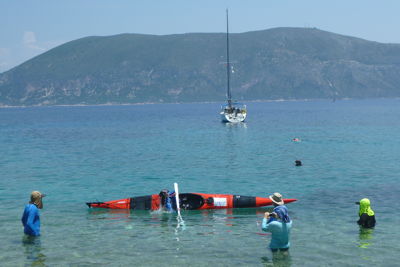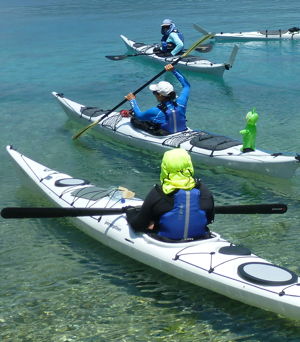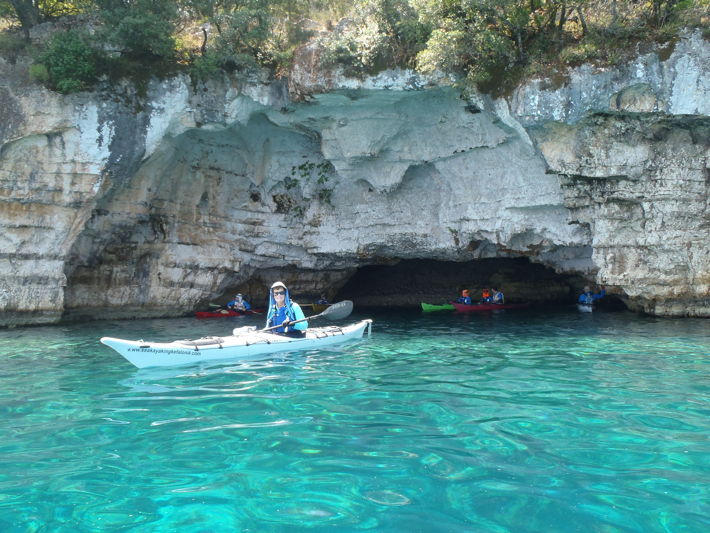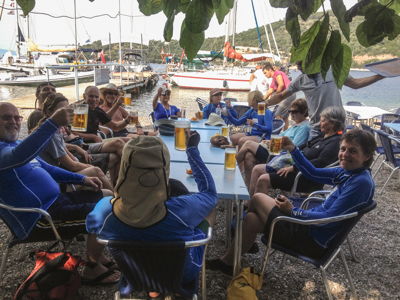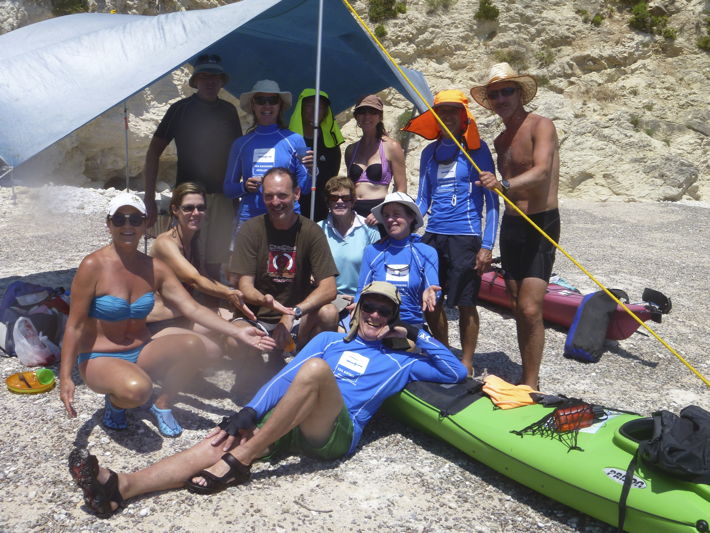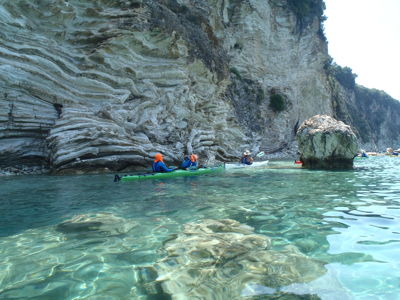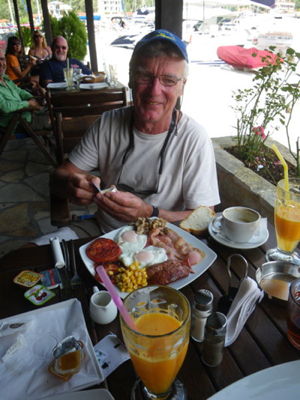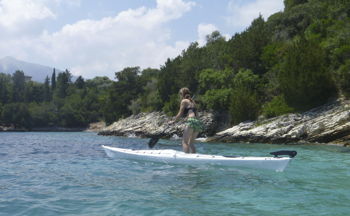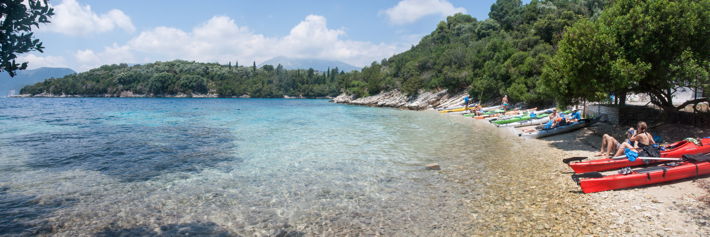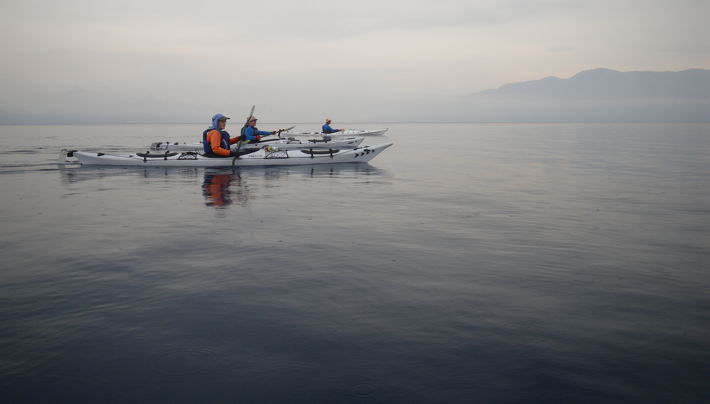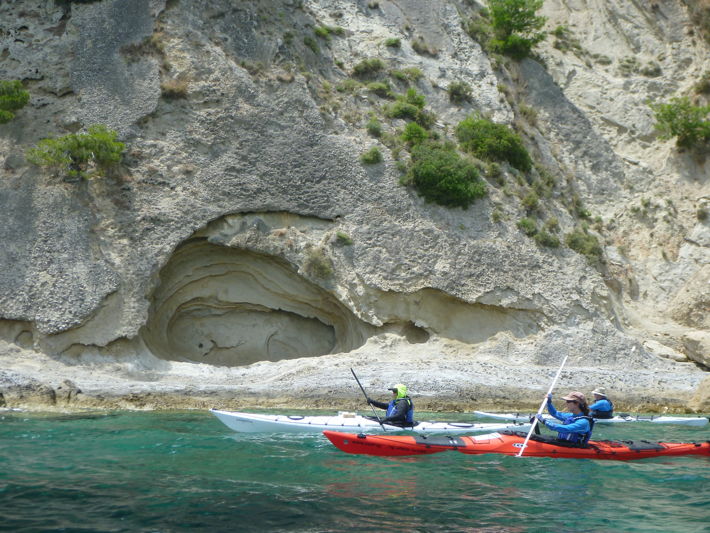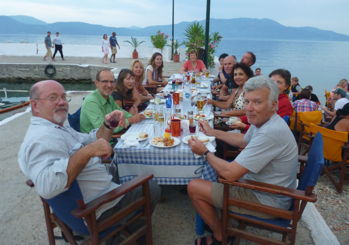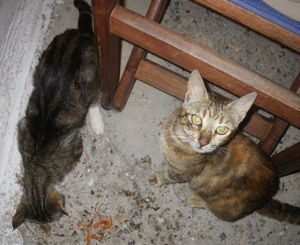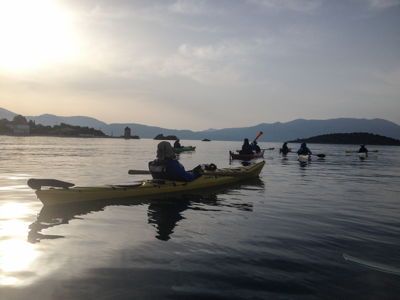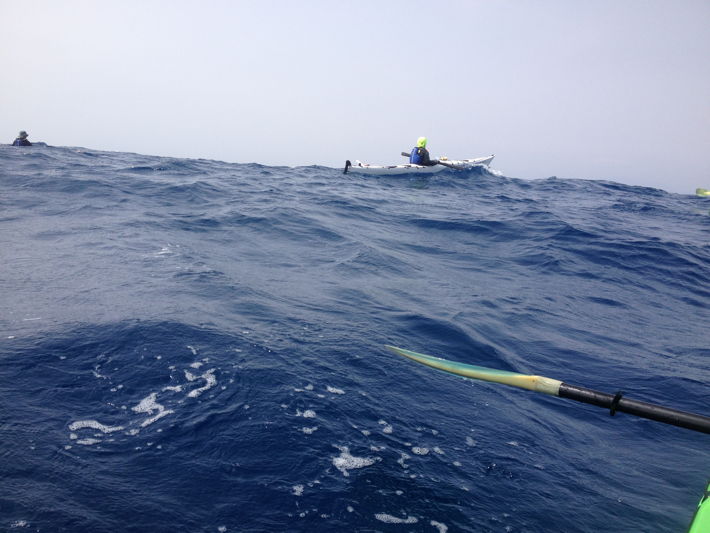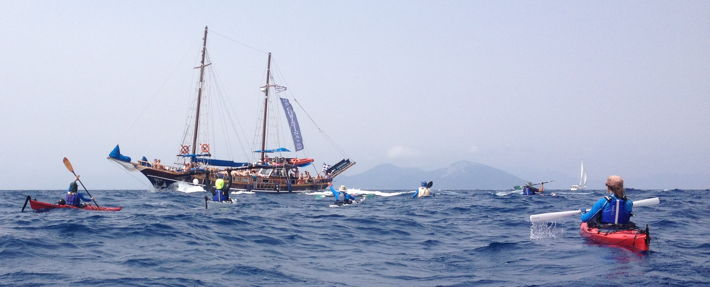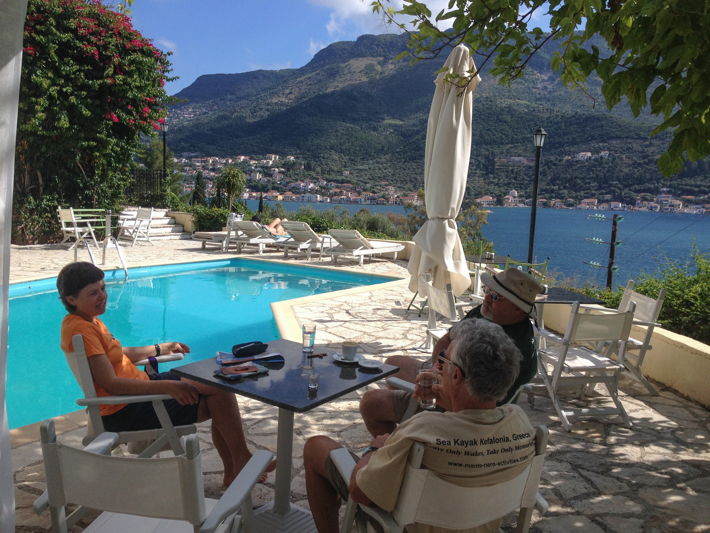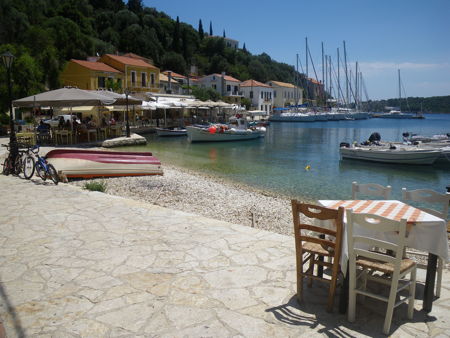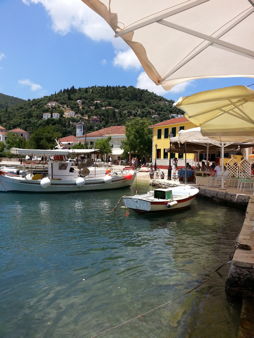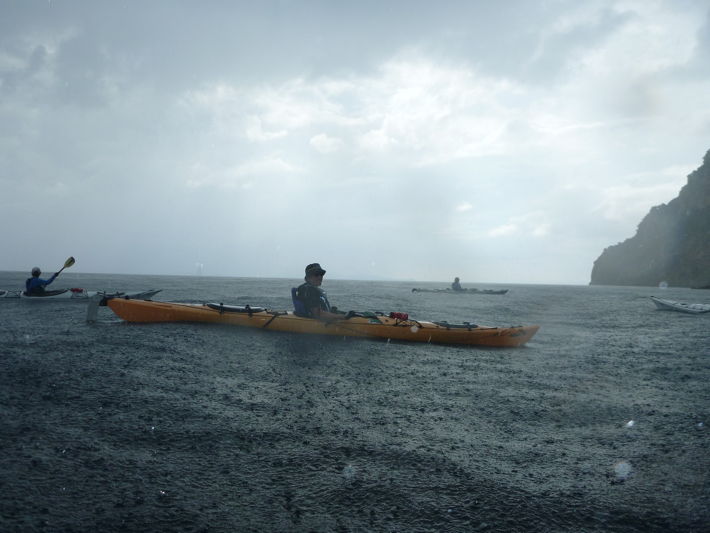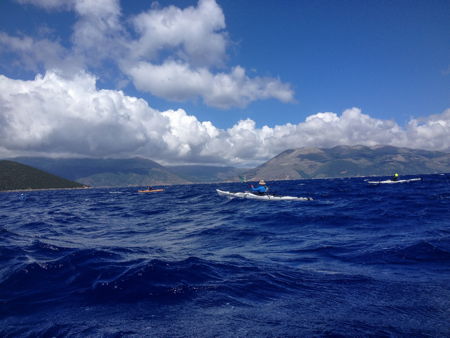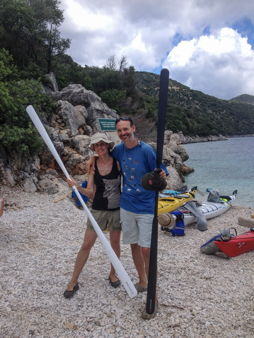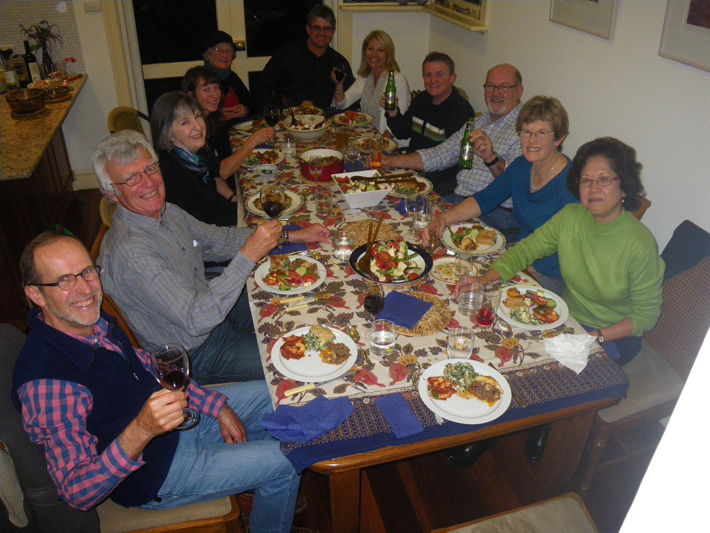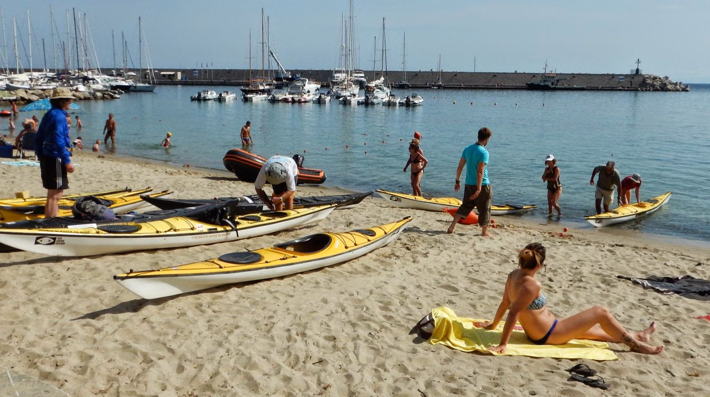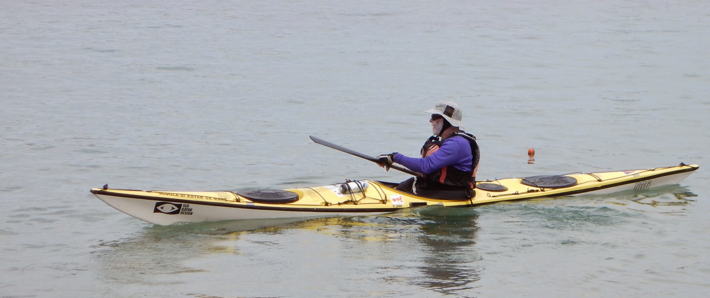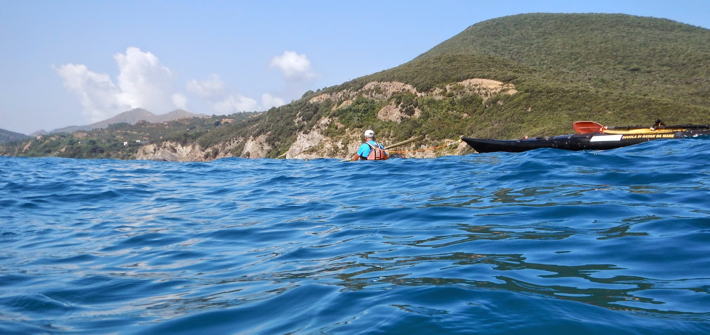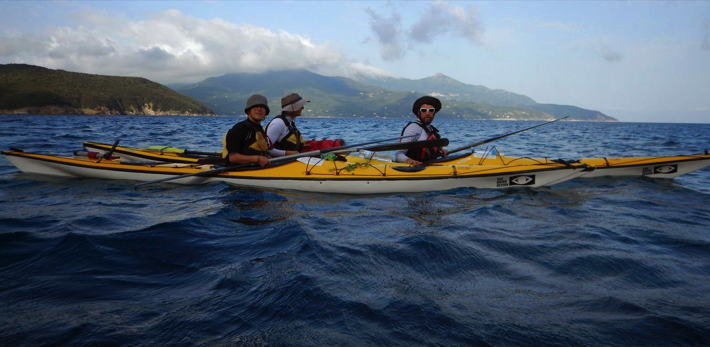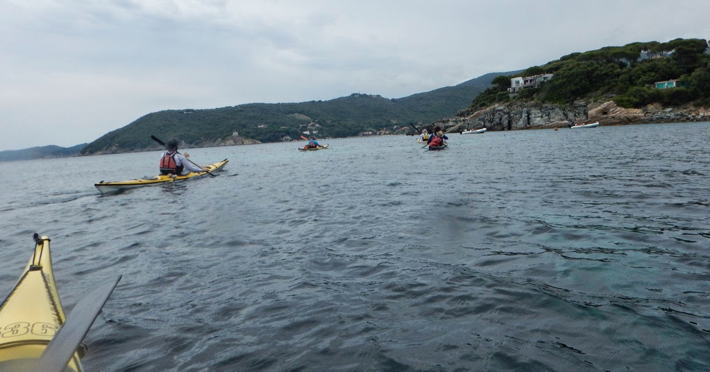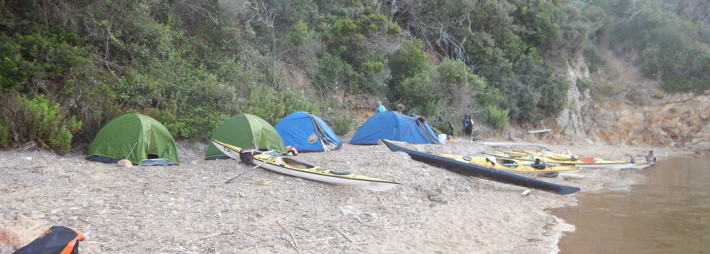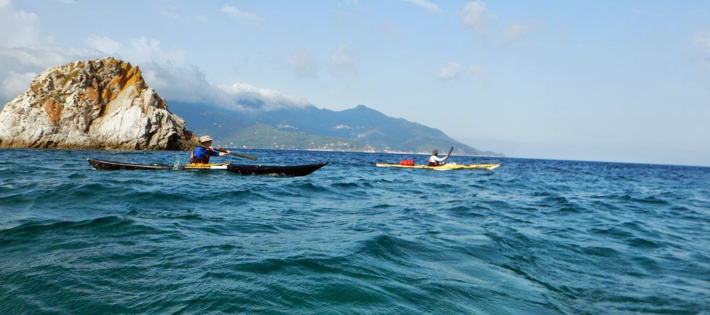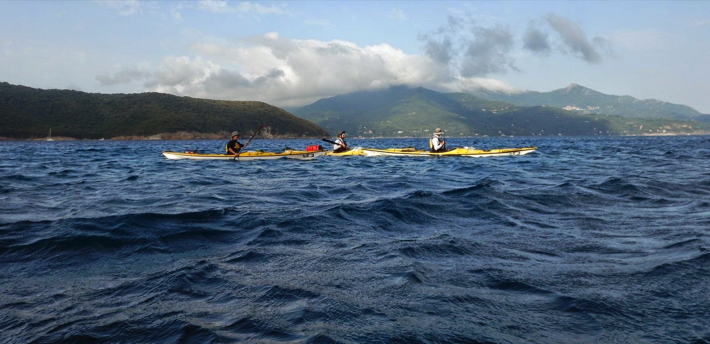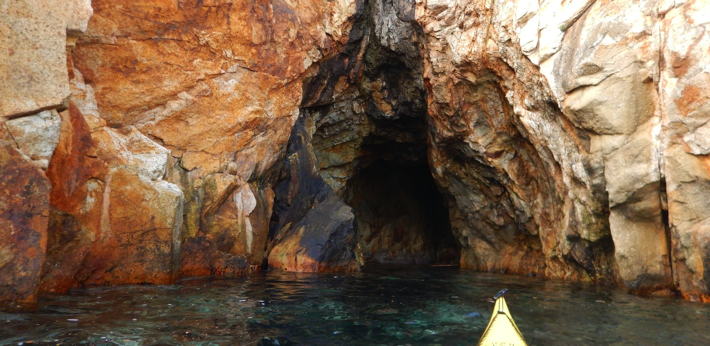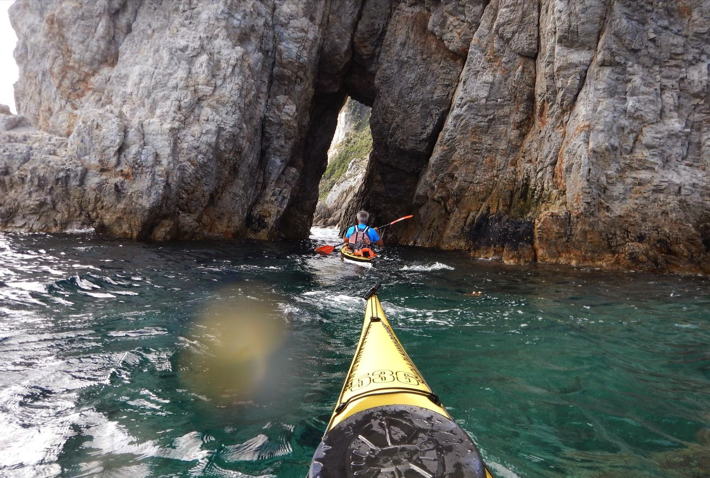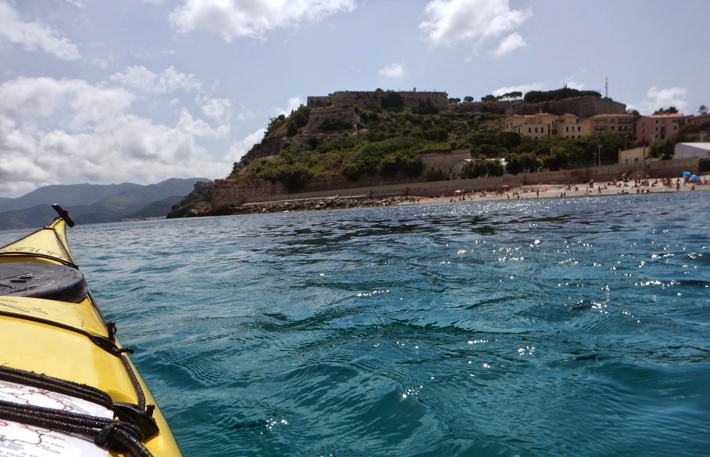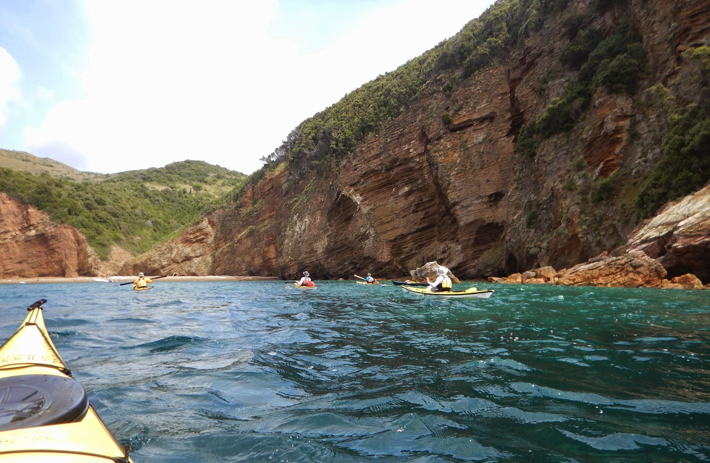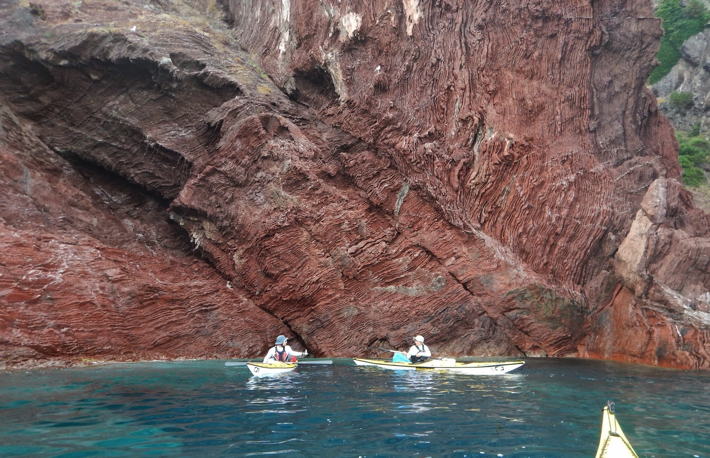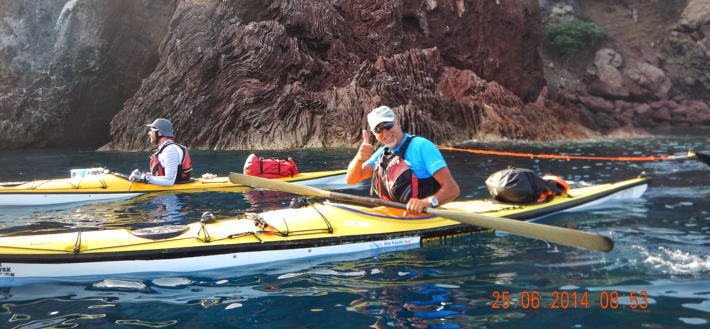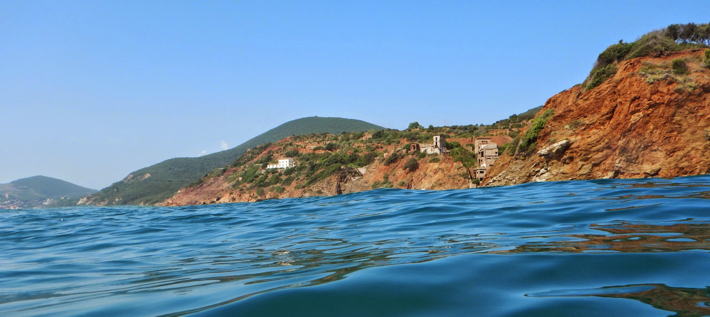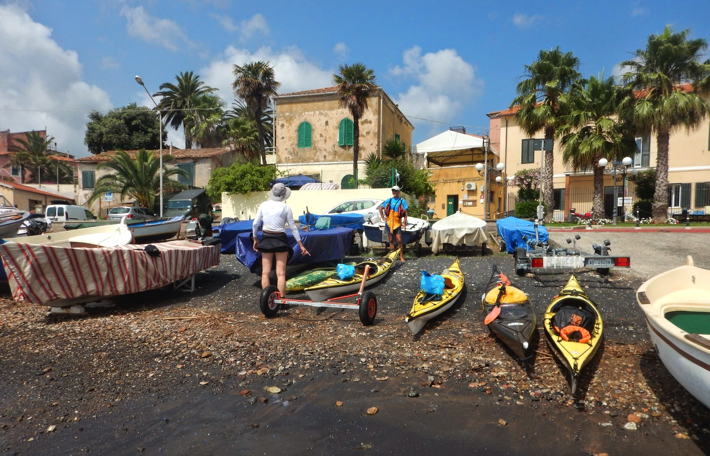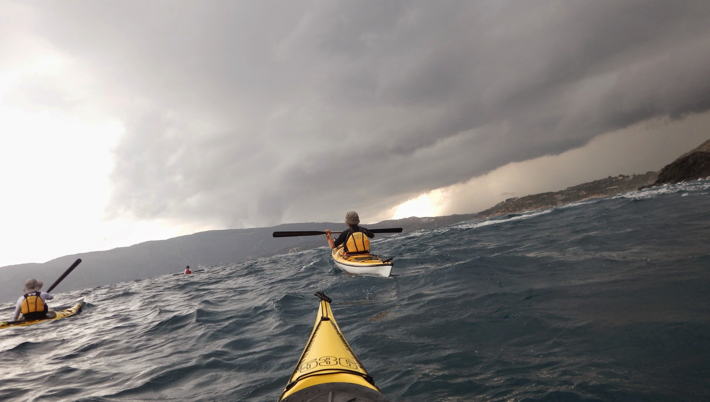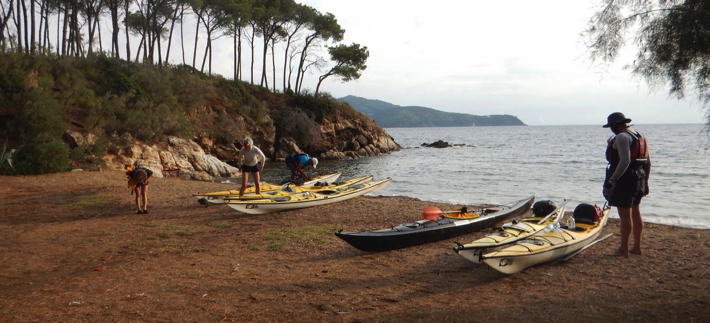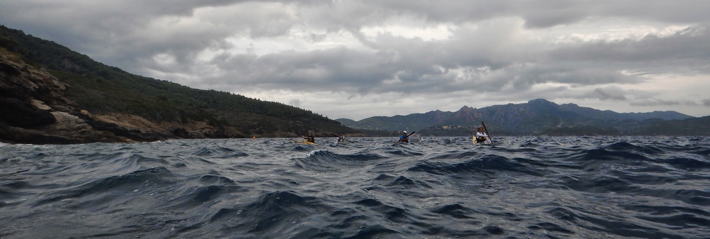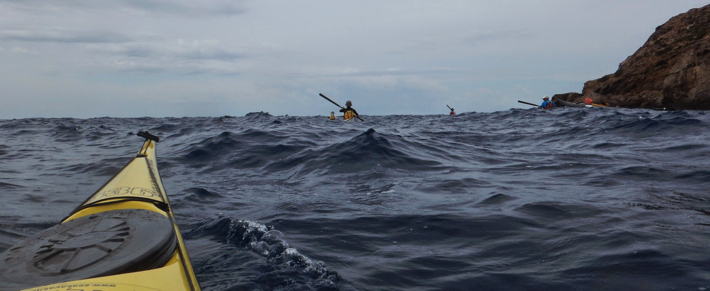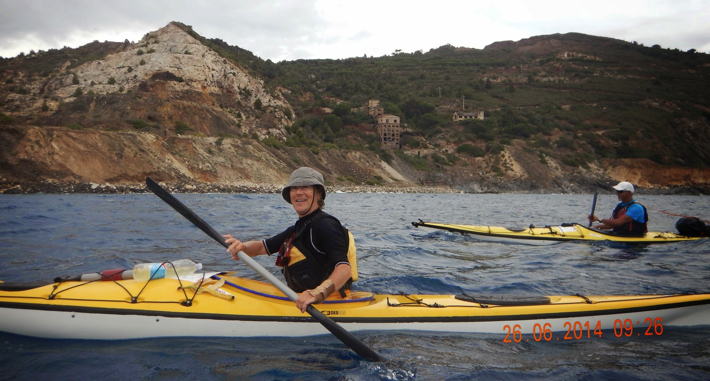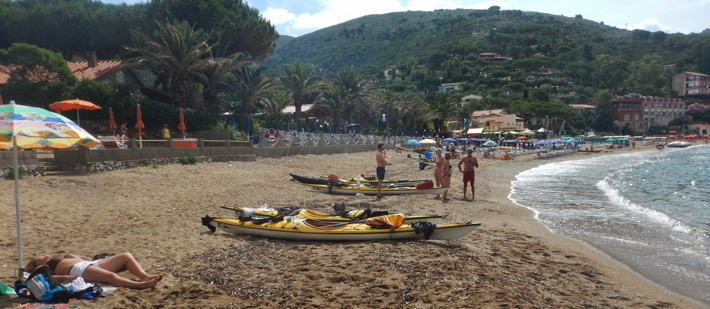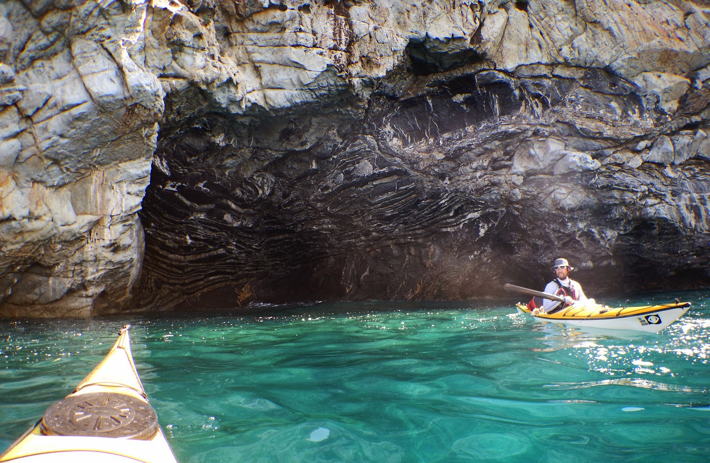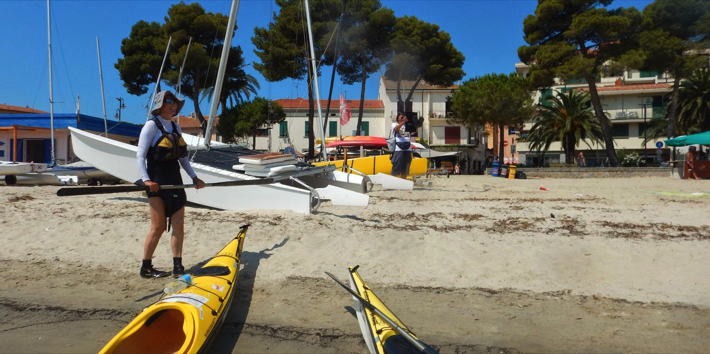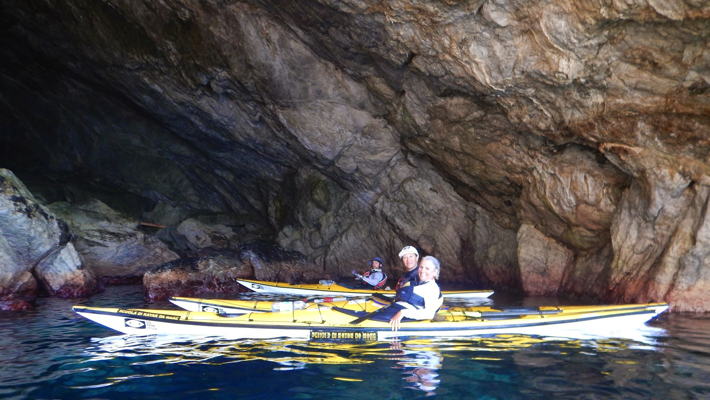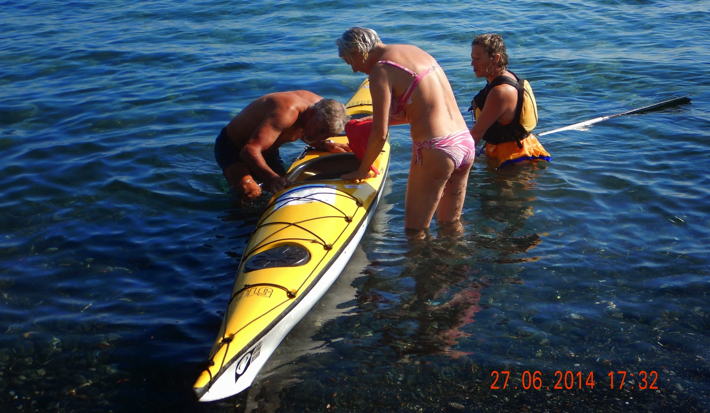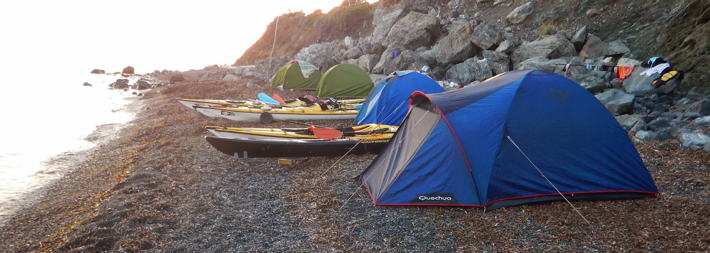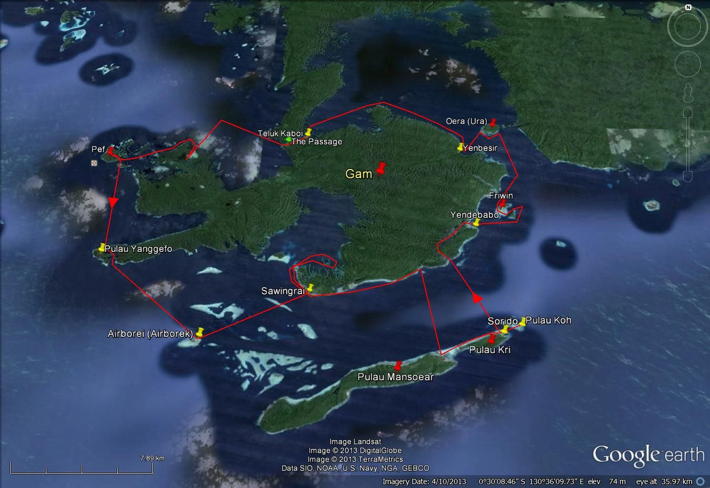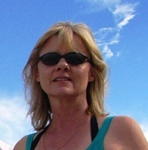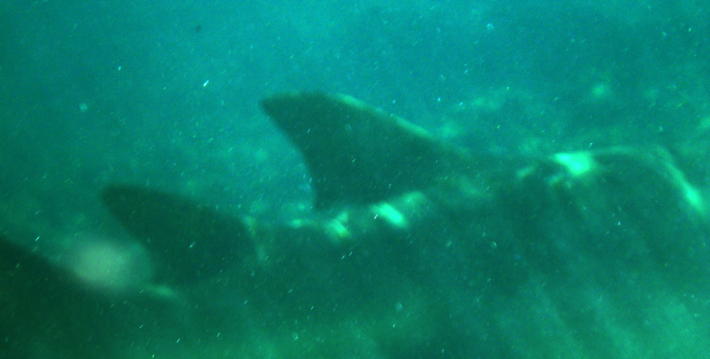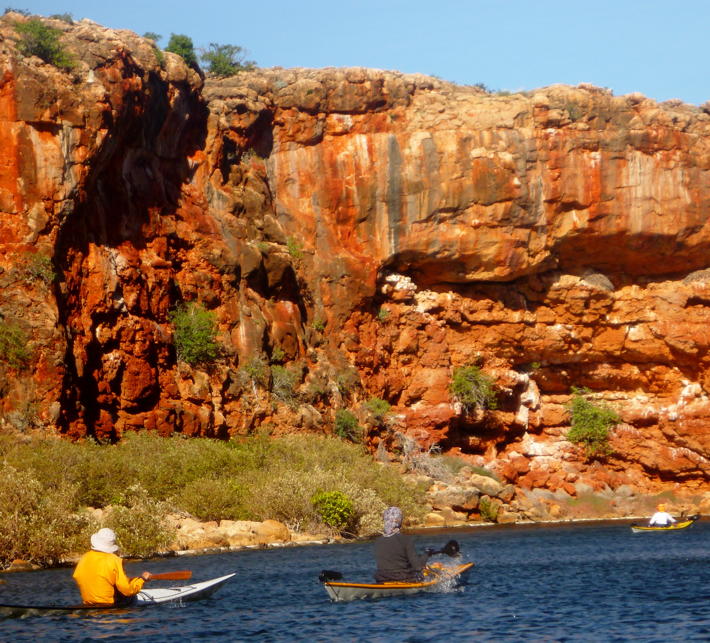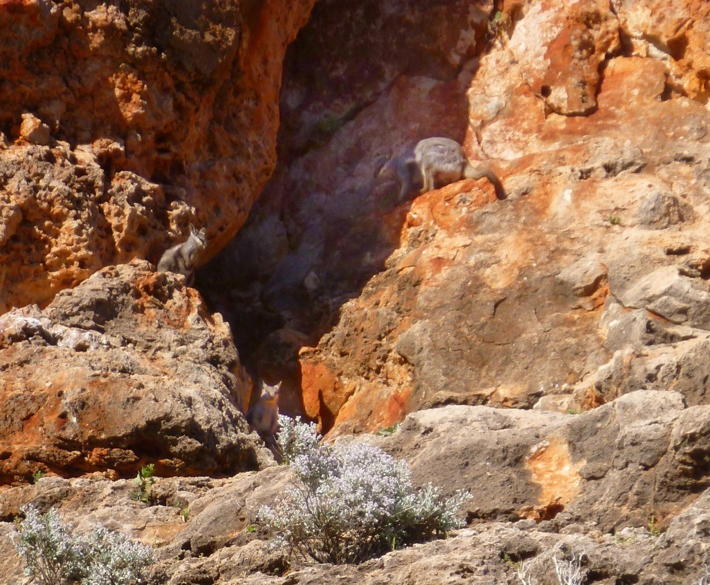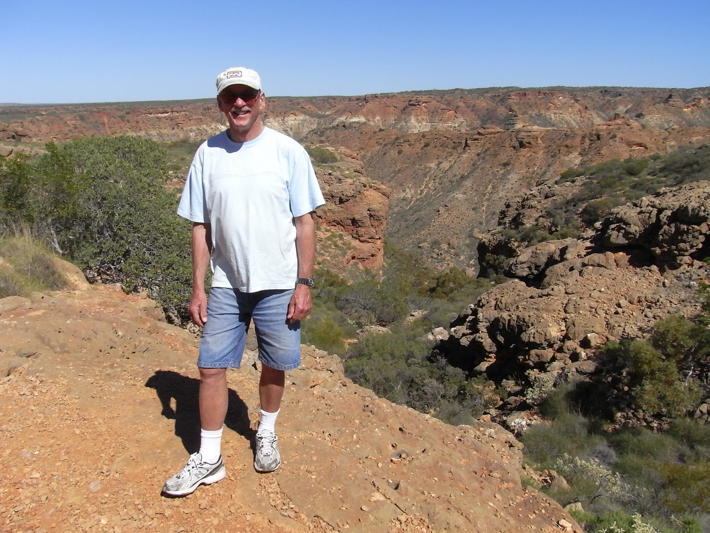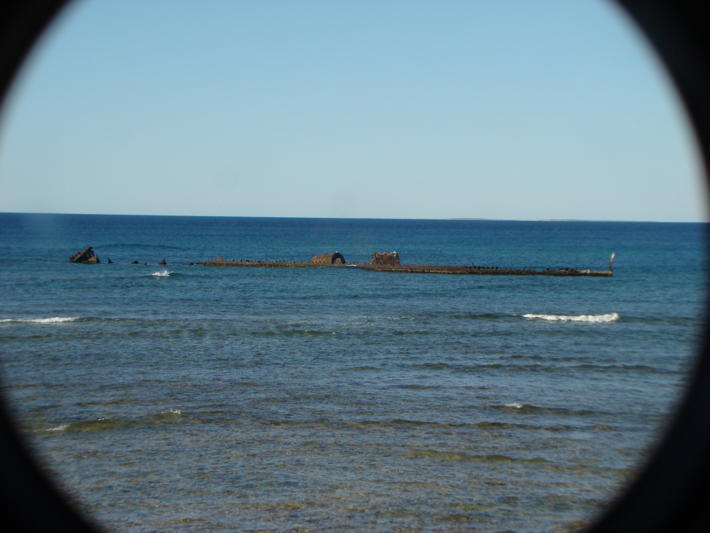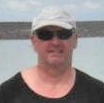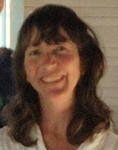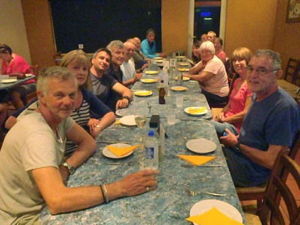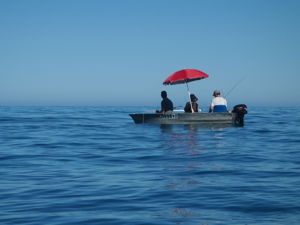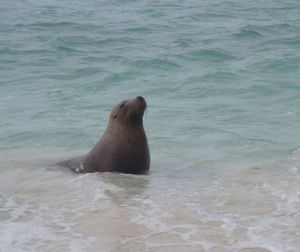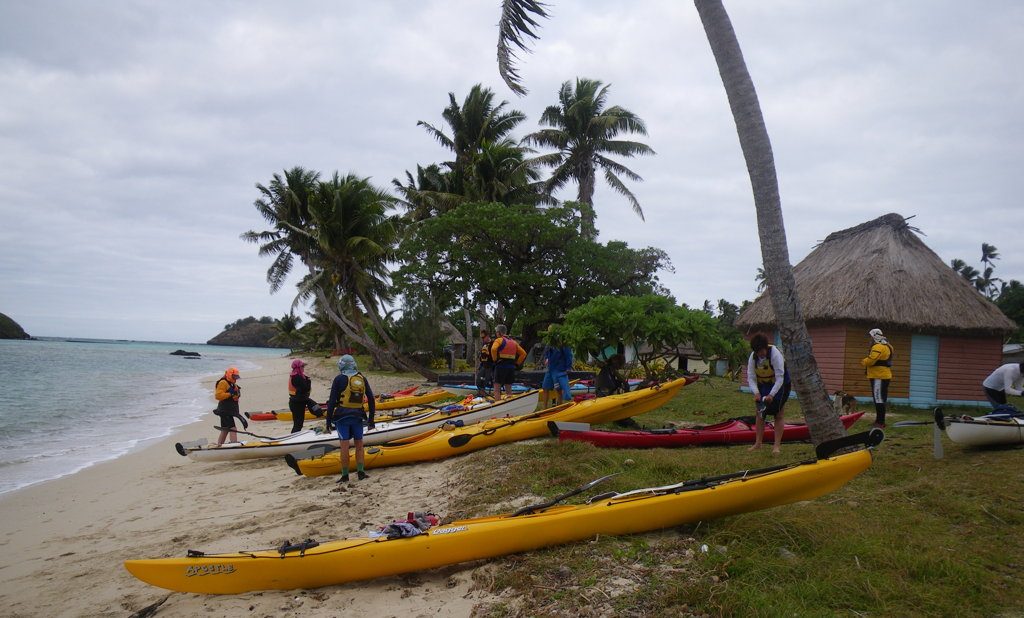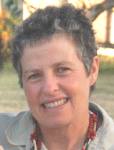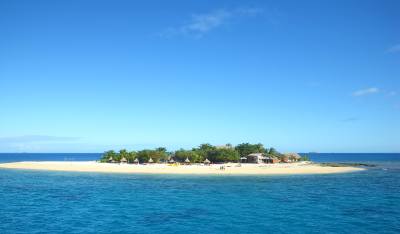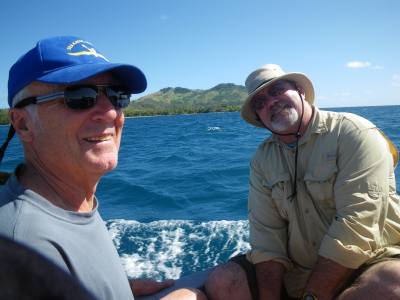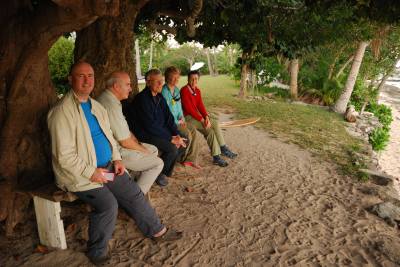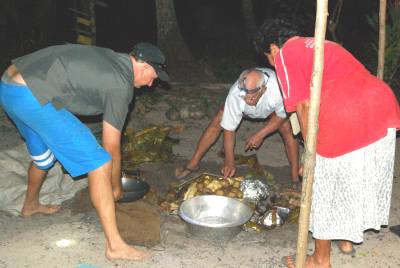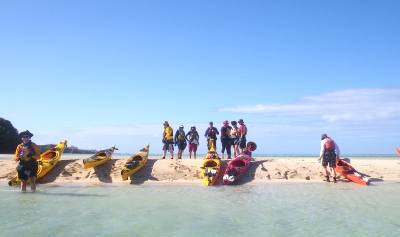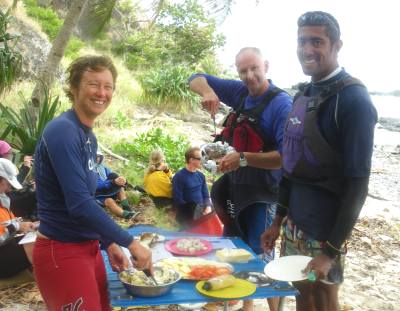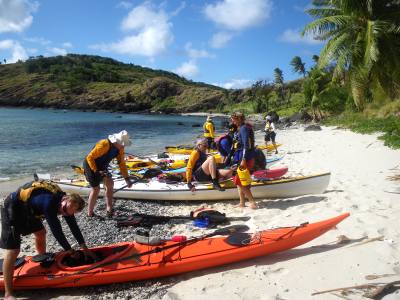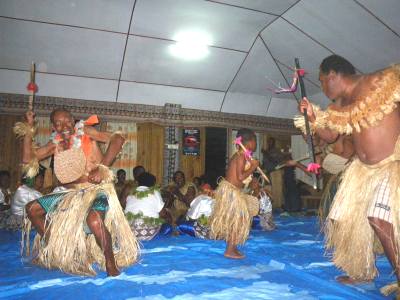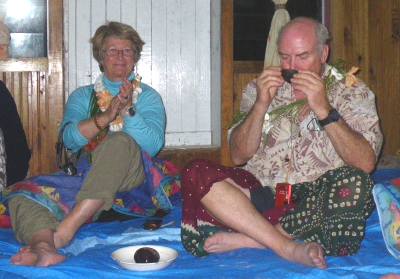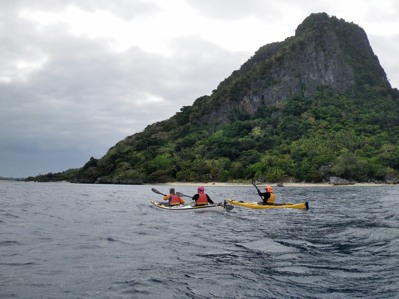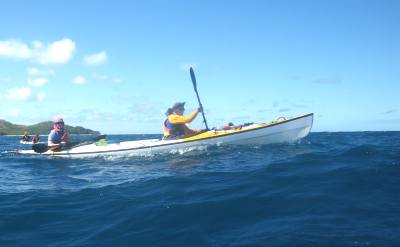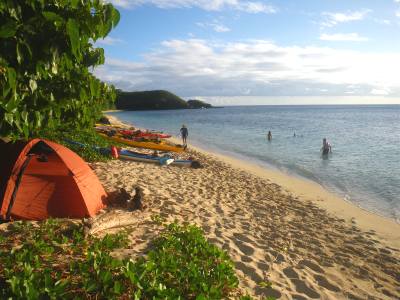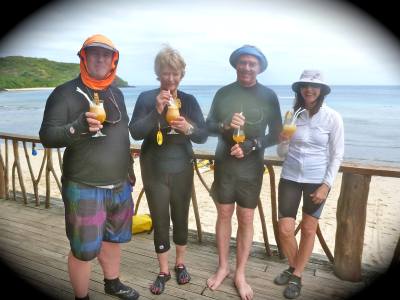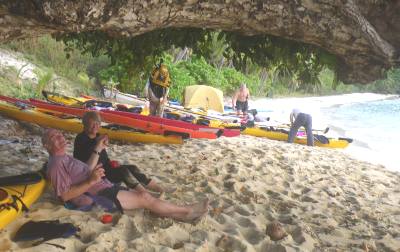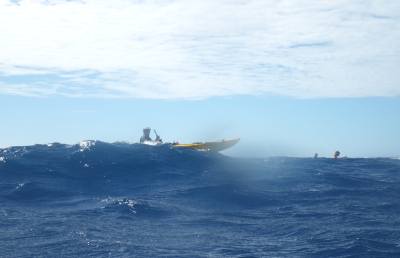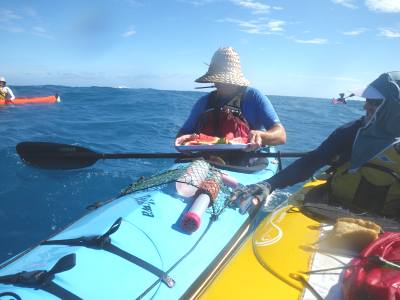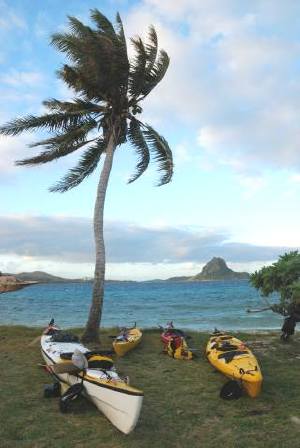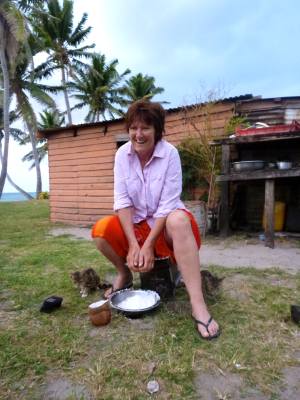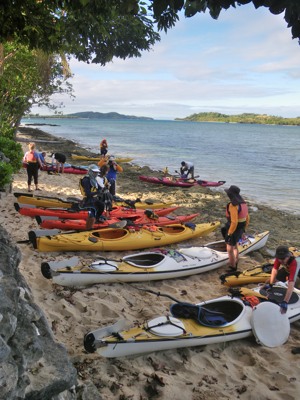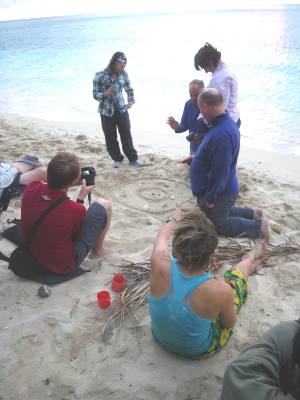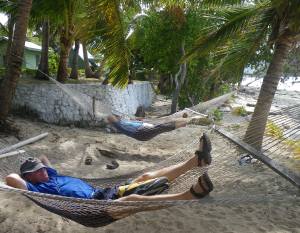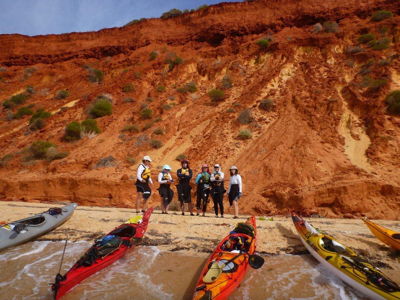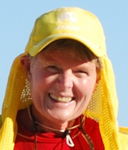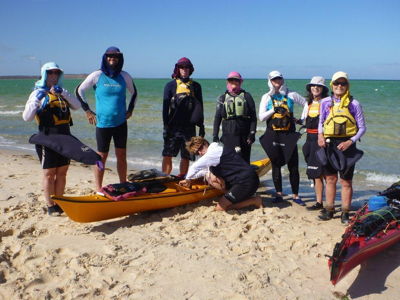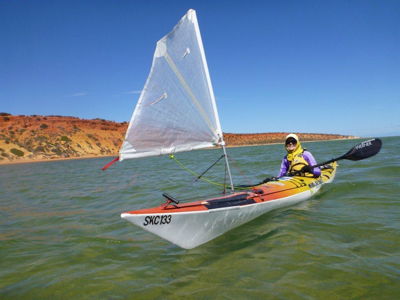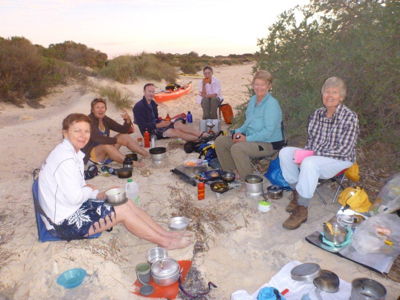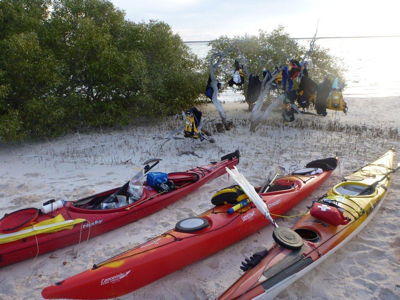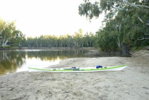|
By
Ken Burton |
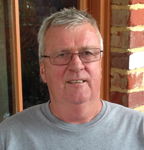 |
In early September 2014 a group of three intrepid paddlers met up on Salt Spring Island, BC, Canada to plan a sea kayak voyage in the Desolation Sound area.
The participants were:
Tarquin – Perth born adventurer, outdoorsman, scholar, conversationalist, sociologist and dog lover living on Salt Spring Island, BC. And the ‘local’ intelligence for this trip!
David – Aussie living 6 months on Salt Spring Island and 6 months in Emerald Queensland. Leading Canadian and Australian crop-dusting pilot with a serious sense of adventure.
Ken (KB) – retiree, adventurer and all round good guy who decided to plan and complete a Canadian sea kayak trip after many epic trips in the North and South of WA.
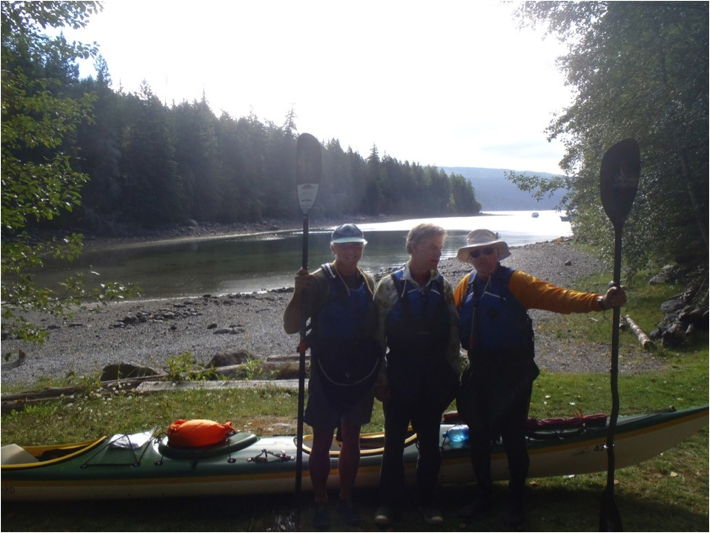
The trip to our start point at Okeover Inlet required a couple of vehicle and ferry trips from Salt Spring Island (our base), across to Vancouver Island and then a 2 hour drive north and ferry to the town of Lund. We checked out the kayak and camping equipment hire location and were a little unimpressed with the hire fleet. After finalising our requirements for tomorrow’s start we retired to the Lund Heritage Hotel for a very good meal and a few quiet drinks. We were very excited and looking forward to the next 8 days in the sea kayaks. Our chosen kayaks were Nigel Foster designed “Seaward’s”; one double @ 37 kilograms and one single @ 28 kilograms. We decided to swap between the double and single with Tarquin taking the single on day one.
After rising for a sensational Gluten Free {GF} breakfast at Nancy’s Bakery we loaded the Landrover with our gear for the short drive to our starting point at Okeover Inlet. After getting the boats down to the muddy and rocky low tide mark we loaded up the two boats with all our gear including 60 litres of water between the three of us. The gear fitted in the hatches with little to spare and at 0945 we took the mandatory picture and started our paddle.
Day one was about 24 kilometres via Zephine Head (the entrance to Desolation Sound) to Portage Cove and then onto Tenedos Bay campsite close to a large freshwater lake (Lake Unwin). It took some time to get used to the fully laden boats and at about 1100 we were rounding Zephine Head when confronted by a full ‘incoming tide’. We made little headway for the next 1.5 hours as we battled the strong tide. We then decided to land on a sand quay for a quick lunch stop. After about 30 minutes we had to move on as the tide was almost covering the quay. The tide had now almost completed its inward journey and we were able to start making significant progress towards our overnight camp site.

We passed between Mink Island and the Gifford Peninsula and headed on the ebb tide towards the Tenedos campsite. We arrived at the campsite at 1500 hours after a very vigorous paddle for day one! We were pleased to be able to stretch our legs and pick out a nice camp site to erect our MSR 3-man tent which by the way was superb and very easy to put up and take down.
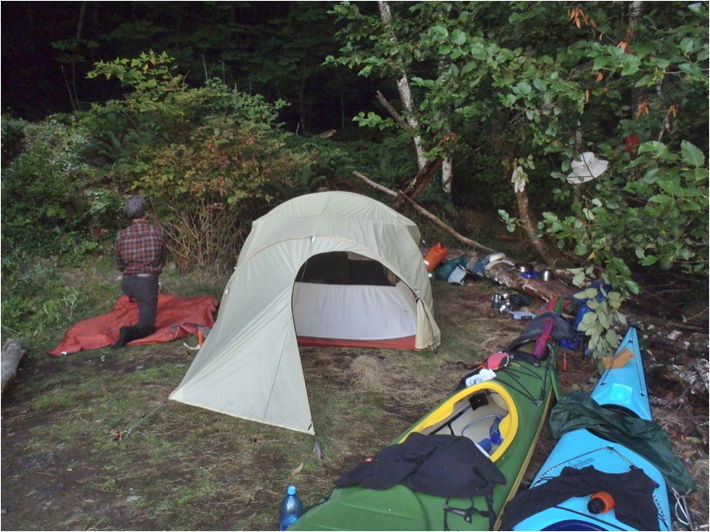
There were four sites for camping and only one was being used by a lone paddler in a “TRAK” fold up kayak. We then commenced cooking our first meal and it was very good. David and Tarquin had brought along fresh vegetables, a huge container of olives, cheese, salami, noodles, GF breads and crackers and so the scene was set for ‘dinner’ with every night being preceded with snacks before the main meal. We had tirelessly packed each meal and placed in plastic bags prior to leaving Salt Spring Island so everything was well planned. We had pasta and rice and KB promised fresh salmon so everything was set for a great paddle with good food.
Tarquin and David (being the experienced locals) then advised that we have to be careful of bears and cougars and that all food must be hauled up into the trees away from our tent so these dangerous animals would not cause us any problems. We had purchased a can of “Bear Spray” that according to the manufacturer would deter bears if you followed the instructions! The instructions were…”If a bear approaches take safety catch off, aim directly at the bears nose, wait until the bear is within 15 feet and then press button” …Yeah right! We kept the bear spray in the tent with us but in reality I doubt if it would have helped us in the event we were attacked by a bear. That night and subsequent nights we set a rope between large trees and pulled all the food bags to a height of 4 metres immediately after dinner. It was a ‘pain’ but necessary!
We all snored somewhat during that first night and ‘ribbed’ and criticised each other and for some reason, from then on, the snoring stopped for the rest of the trip!
Perfect sunny weather greeted us on day two. It was decided that as day one was a little tiring that we would do some hiking to Lake Unwin for a swim and enjoy a small day paddle of about 8 kilometres to Mink Island in the afternoon and utilise the same campsite as day one. After the swim KB decided to return to the campsite by himself and duly got geographically embarrassed for some 2 hours – the Northern Hemisphere proved difficult for him to get his bearings correct! After a bit of Aussie ribbing we set off on our short afternoon paddle accompanied by what seemed like dozens of dolphins and seals also delighting in the Indianesque summers day.

Another healthy GF dinner was prepared by Tarquin and David with fresh vegetables, including kale, tomatoes and carrots. We were using about 4 litres of water per day each and although water was not readily available we had spoken to some boaties who had agreed to donate water if we needed it. As it was summer the waterways and anchorages seemed to have a few boats at each location so we were confident that the water situation would be OK.
That night we shared conversation with the solo paddler and found out that he had been on the water for 2 weeks around Desolation Sound and was heading back over the next three days. We retired at about 2000 hours and all slept pretty well except for the mandatory toilet visit during the night – when one person woke we all woke!
We again awoke to beautiful sunny weather on day three. After a hearty breakfast of bacon, eggs, flat bread and green tea we packed up the site, loaded the boats and headed for Prideaux Haven, a distance of 10 kilometres. There were over 20 boats anchored in Prideaux Haven so we decided to venture onto Melanie and Laura’s Coves, another 7 kilometres, to see if we could locate a nice pristine campsite. Melanie Cove was awash with massive oysters the size of your hand and when the meat was taken out of the shell one had a palm full of delicious oyster meat. Tarquin and David were not real keen on the oysters and had to ‘drag’ KB away after he just could not stop eating them. The campsite at Melanie Cove was too rocky and subject to tidal flooding so we ventured to Laura’s Cove. We located a very nice campsite at Laura’s Cove, complete with a drop-pit toilet, freshwater stream and a great picnic table and seats – heaven at last!
Tarquin and David decided to hike over very hilly terrain from Laura’s Cove to Melanie Cove, a distance of about 12 kilometres while KB stayed in the camp and enjoyed the solitude, fruitless fishing attempts and entertained a few Canadians with his stories! Late in the afternoon we enjoyed a brisk swim in the sea jumping from high rocks and entertaining the local boaties – yes, it was very cold water but certainly well worthwhile.
Tonight was a full moon and at about 0400 a pack of wolves moved very close to our camp and started a cacophonic chorus that chilled us to the bone. I heard Tarquin whisper to David – ‘are you awake’ with an instantaneous response of ‘nuh’! We had our bear spray which apparently works on wolves and cougars so we decided to stay in the tent and hope that they would retreat. No sleep for the rest of the night and when we removed ourselves from our sleeping bags we found wolf droppings 10 metres from the tent – Shit O’Reilly!!!
Day four was another perfect day in paradise! We decided to paddle from Laura’s Cove across the Homfray Channel to Roscoe Bay Marine Park located in a cove on West Redondo Island, a distance of around 14 kilometres. The seas were very calm and we could see awe-inspiring snow capped mountains in the distance. As we left Laura’s Cove we paddled next to a massive rock face that rose vertically out of the sea to a great height – we felt very small when parked up against this in our small kayaks.
We entered very sheltered waters with the depth only about one metre at the entrance to the cove and witnessed a boatie hit the bottom at speed and do severe damage to his propellers. We paddled a further one kilometre to the end of the cove and located a premier campsite on high flat ground with a view back towards Melville Island.
Lugging the boats up to the high ground was a bit of a chore but we had learned that the tides were very high and sometimes unpredictable. Directly behind our campsite was a walk trail to Black Lake – a freshwater lake that provided us with another perfect location for a swim and to enjoy the sun while lying on the rocks. As we arrived at this campsite early we prepared a gourmet Mediterranean lunch with olives, the last of our cheese, tomatoes, crackers, GF flat bread and nuts washed down with copious quantities of green tea.
This campsite was so pristine and comfortable that we decided to call a rest day and spend day five at the lake swimming and relaxing.

After a very invigorating rest day at Roscoe Bay we rose early on day six for the paddle to Portage Cove and then to our final overnight camp located at Galahad Point in the beautiful Theodosia Inlet, a distance of 22 kilometres if we were able to utilise the Portage Cove crossing, or 31 kilometres if we were unable or not permitted to use the crossing. The paddle across Homfray Inlet was breathtaking with magnificent mountain views, playing seals and frolicking dolphins following our every move. We heard Orca’s ‘blowing’ but could not get within a suitable distance for photographs.
When we arrived at Portage Cove our hearts began to flutter and we all hoped and prayed that the owners of the land would not be on site as they were known not to appreciate paddlers crossing their land and we had heard rumours that they would set their dogs onto any trespassers! Following a discussion Tarquin and David decided to send KB up to the house while they waited in the boats at a safe distance. KB gingerly stepped ashore and headed for the house – absolute elation followed when it was obvious that no one was ‘in-residence’. The owners were not there and so we were able to carry the double and the single and all our gear over a grassed 300 metre hillock to the other side of the cove and the start of Lancelot Inlet! We were so delighted that no one was home we decided to have a gentleman’s picnic lunch under the over laden apple trees and assorted fresh bear droppings from their previous evenings feast.
We set off in the kayaks to Theodosia Inlet and then spotted our campsite at Galahad Point. The tides were supposed to peak in the next hour so we decided to set up the camp, the tent and a cooking fire on what we thought was high ground and well above high tide! To our horror the tide kept coming in and eventually we moved the tent up to higher ground as the ‘hiss’ of the fire being put out by the rising water was heard! We then moved the fire up onto a very small camp site and re-packed all the bags ready for a quick departure in the kayaks and a night paddle back to Okeover Inlet. Luckily for us the tide started to recede just on dark and we were able to stay our last night on what was now an ‘island’ in the middle of the inlet. It was an exciting time deciphering the tides and bought home the fact that you cannot totally rely on tide charts that are not precisely ‘local’.
Day seven dawned with yet another magnificent sunny day with virtually no wind and no tide movement. Today we would paddle through Lancelot Inlet and then into Okeover Inlet, past Hillington Point and Coode Peninsula – a distance of 16 kilometres. At the end of Coode Peninsula we turned North around Boundary Rock and raced the final 500 metres to our launching point and kayak hire shop.
The next two hours were spent unpacking the kayaks, cleaning the kayaks and driving the short distance to the ‘Laughing Oyster Resort and Restaurant’ where we had booked sensational accommodation and enjoyed one of the best seafood meals we had enjoyed in any part of the world washed down with excellent Canadian wines!
Over the seven days we had paddled approximately 100 kilometres of absolute pristine waters, viewed wildlife and above all, developed camaraderie and friendship that would last a lifetime!



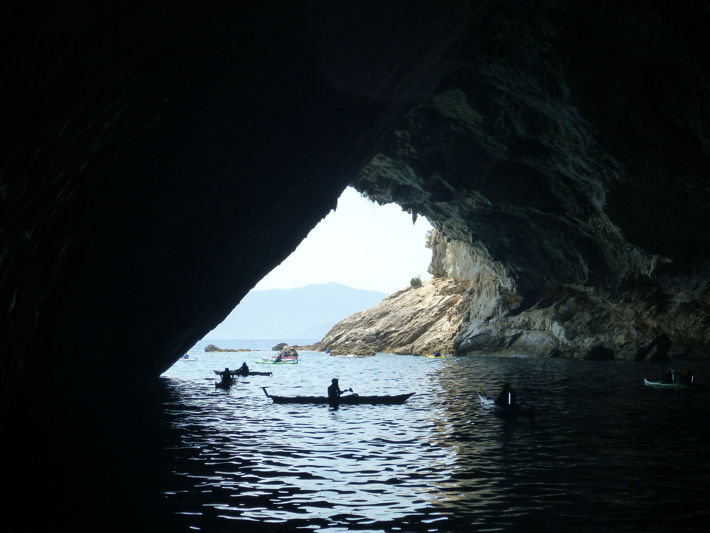
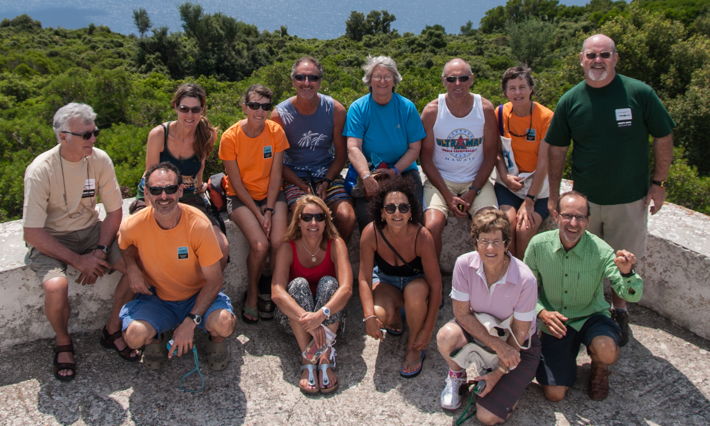
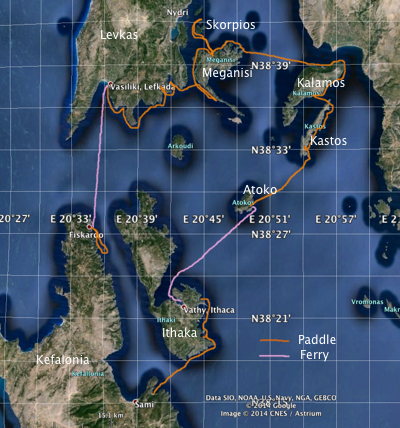 [
[